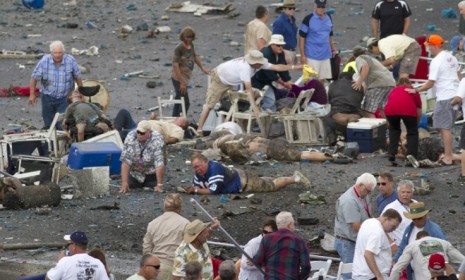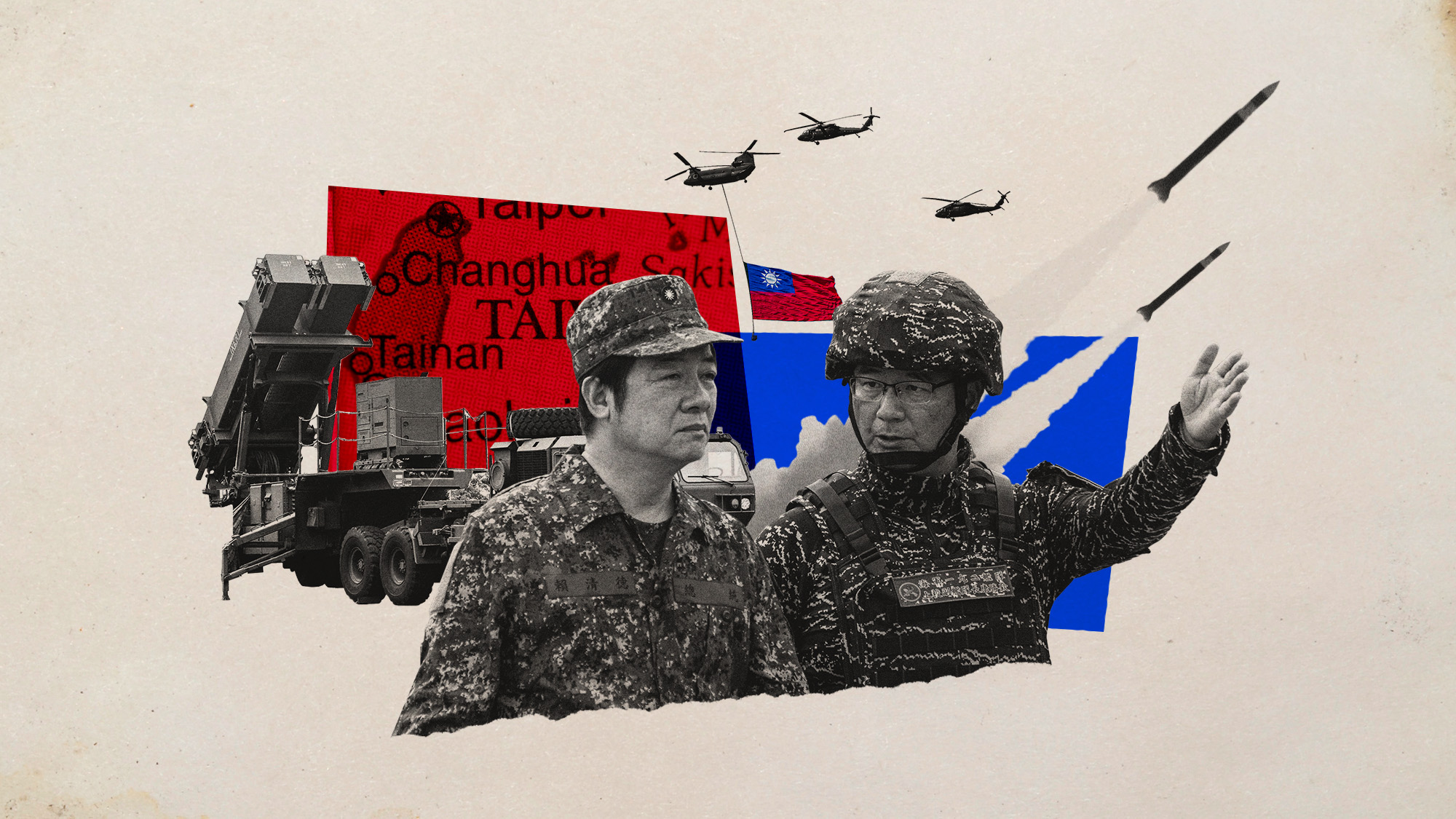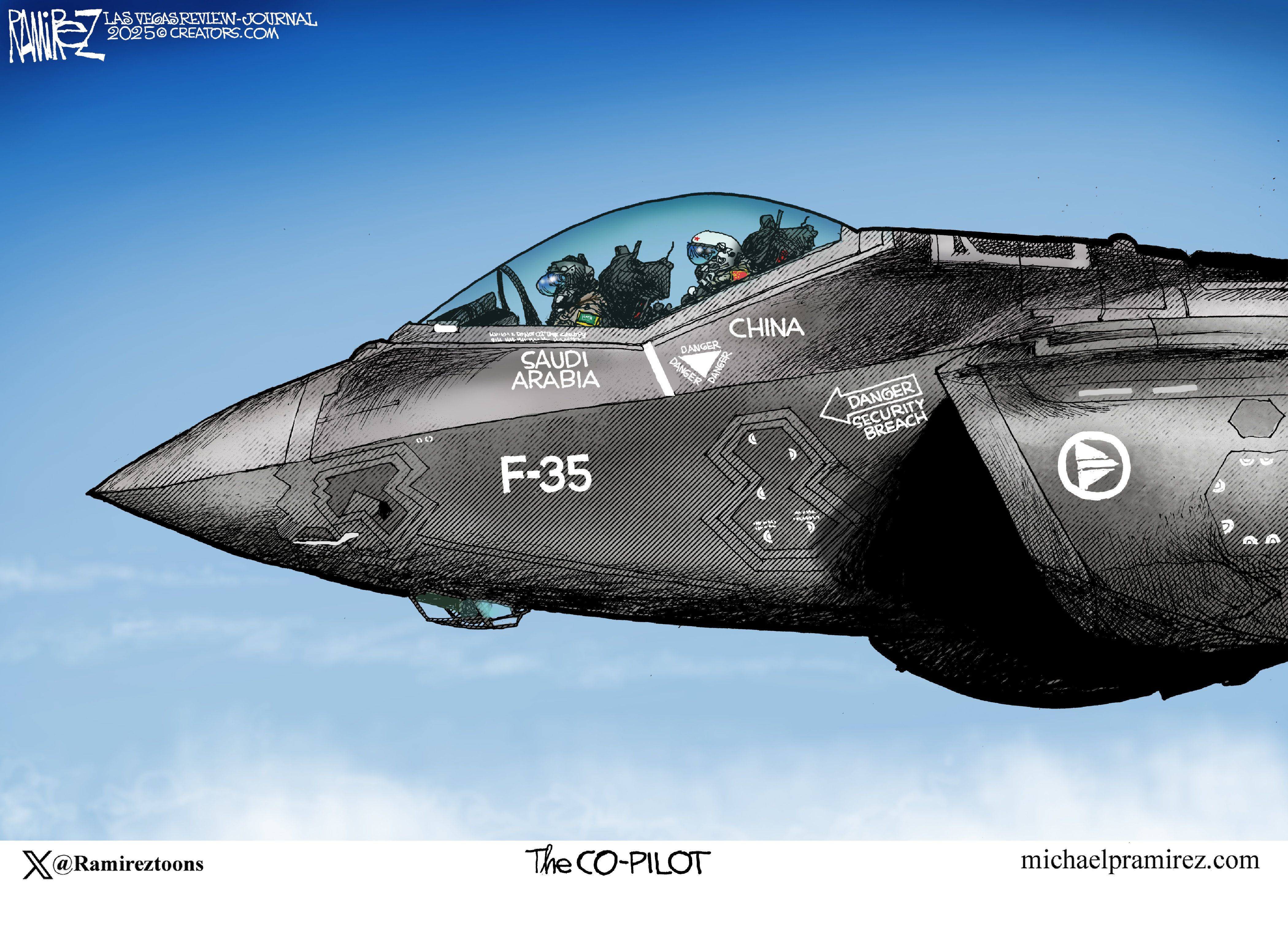The deadly Reno air-race crash: 4 lessons
A souped-up 1940s plane crashes into the grandstands at a Nevada air show, killing the pilot and eight others. What can we learn from this tragedy?

On Friday, a vintage World War II–era P-51 Mustang fighter plane piloted by veteran stunt flyer Jimmy Leeward crashed into the VIP stands at the National Championship Air Races outside Reno, Nev., killing Leeward and at least eight others, and injuring dozens more. (Watch an expletive-laced video of the crash below.) The next day, a post-war T-28 Warbird crashed at an air show in Martinsburg, W.Va., killing the pilot, Jack "Flash" Mangan. What do the crashes tell us about the safety and future of air competitions?
1. These races will never be completely safe
The Reno air races are different than air shows: Thousands of people come every year to watch planes race "wingtip-to-wingtip, following an oval path around a course of pylons, sometimes buzzing the ground as close as 50 feet, at speeds in excess of 500 mph," says Mike Spinelli at Jalopnik. Leeward was the 20th pilot to die in the Reno air races' 47-year history, although these were the first audience fatalities. "Other than moving the race course a mile or so from the grandstands, I don't see how you can make the sport safer," says Don Berliner, president of the Society of Air Racing Historians. And fans won't travel from around the country for a lousy view.
The Week
Escape your echo chamber. Get the facts behind the news, plus analysis from multiple perspectives.

Sign up for The Week's Free Newsletters
From our morning news briefing to a weekly Good News Newsletter, get the best of The Week delivered directly to your inbox.
From our morning news briefing to a weekly Good News Newsletter, get the best of The Week delivered directly to your inbox.
2. But the risks can be tamed
Race officials still have to "explain why, with all the safety prerequisites at air shows and races, the Reno spectator section was placed below the circuit where airplanes perform at low altitude and at speeds in the 350-400 mile per hour range," says Christine Negroni at the Seattle Post-Intelligencer. The death of spectators does change the standard "pilots knew the risk" calculus, says the Reno Gazette-Journal in an editorial. It's too soon to shutter the race, but until we decide its fate, "schools should suspend all field trips to the air races," the screening of pilots and planes must be re-examined, and "no one should be criticized for wondering if the pilot's age, 74, contributed to the crash."
3. Actually, the dangers aren't as great as they seem
"If there's anything immediately useful to come from this trauma," says Paul Bertorelli at AVweb Insider, "it might be the framing of public assumption of risk at things like air shows." Compared with auto racing — 29 spectators were killed at NASCAR and other auto races over a 12-year period starting in the 1990s — the risk of death or injury at a U.S. air show or race is "vanishingly small." Anyone who thinks there is no risk "should probably stay home," but we hope Reno decides to let us "airplane crazies" continue to come for its unique air race. Given that the races bring $80 million a year to the local economy, Reno officials do, too, says the Reno Gazette-Journal.
A free daily email with the biggest news stories of the day – and the best features from TheWeek.com
4. Still, modifying old planes is inherently risky
Leeward's 65-year-old P-51 Mustang had undergone a massive overhaul in the year before the race, with five feet lopped off each wing, its engines souped up, and the ailerons — the back edge of the main wings, used to control balance — halved to 32 inches. "These guys have always been pushing the edge of the envelope in terms of driving the airplanes hard, driving engines hard," says MIT aeronautics professor John Hansman. Indeed, in an interview earlier this year, Leeward said the new engines would handle so much stress they're "essentially 12-cylinder hand grenades."
-
 Taiwan eyes Iron Dome-like defence against China
Taiwan eyes Iron Dome-like defence against ChinaUnder the Radar President announces historic increase in defence spending as Chinese aggression towards autonomous island escalates
-
 Political cartoons for November 30
Political cartoons for November 30Cartoons Sunday's political cartoons include the Saudi-China relationship, MAGA spelled wrong, and more
-
 Rothermere’s Telegraph takeover: ‘a right-leaning media powerhouse’
Rothermere’s Telegraph takeover: ‘a right-leaning media powerhouse’Talking Point Deal gives Daily Mail and General Trust more than 50% of circulation in the UK newspaper market